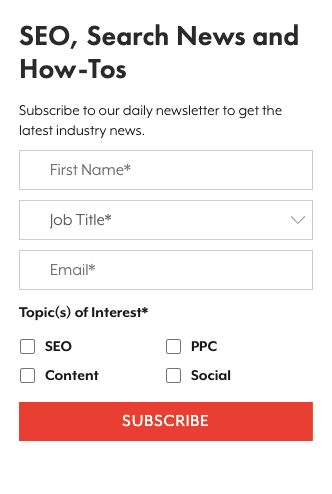 |
| Email Marketing |
Despite being one of the earliest forms of digital communication, email is still the most widely utilized.
Sure, there are innovative ways to reach out to your audience and clients. Social media, live chat, and other communication tools are examples. Email, on the other hand, is the king of marketing channels, with more than 4 billion users.
Email marketing also offers a return on investment of $38 for every dollar spent, indicating that it should be included in every marketer's toolkit.
Email marketing continues to outperform social media, SEO, and affiliate marketing as the most effective marketing medium.
I'm not sure why. Why is decades-old technology still one of the most effective marketing methods, despite all the buzz around new channels?
People prefer email over other channels, despite the advent of social media. After all, what good is it to promote to someone who isn't present?
The majority of people use email, according to statistics, and the number of people using it is growing every year.
Furthermore, you own the connections with email marketing, so you don't have to worry about algorithm updates reducing your reach.
That's why it's more crucial than ever to create an effective email marketing strategy.
There's just one problem: most individuals have no idea how to do it properly. (You've almost certainly seen those people in your inbox.)
This article will show you how to create effective email marketing campaigns with ideas and methods.
What is Email Marketing?
Remember: You’re a Guest in Their Inbox
How Does Email Marketing Work?
 |
Email Marketing |
1. An Email List
2. An Email Service Provider
- increase sales
- increase brand recognition
- lead generation and nurturing
- keep your customers interested
- Boost customer retention and lifetime value
Advantages and Disadvantages of Email Marketing
Advantages of Email Marketing
Email Is Permission-based
Affords You Direct Access to Your Audience
Gives You More Control
More Personalization Capabilities
Measurable
Scalable
Disadvantages of Email Marketing
Tough Competition
You Need an Email List
Tricky Rules and Regulations to Navigate
Delivery and Deliverability Issues
Email Marketing Examples
What does this email get right?
- Great subject line: The subject line focuses on the key pain point of the target audience, which is improving their health.
- Color psychology is used: bright, warm hues elicit sentiments of well-being and happiness.
- Well-timed: The email is sent when the customer's supply is about to run out and is targeted to persons who have purchased the goods.
Bluehost
- Sells the benefits, not features: By focusing on the benefits, the content becomes more enticing.
- Clean design: The email's clean design makes it aesthetically pleasant and straightforward to read.
- Excellent targeting: Bluehost understands that their audience is primarily made up of small business owners that lack technical knowledge. The email is written in a way that appeals to this population.
How to Automate Your Email Marketing
Define Your Segments
Design an Efficient Workflow
Determine the Right Triggers
Best Email Marketing Strategies
Use the Right List Building Strategies
Practice Good Email List Hygiene
Keep Your List Warm
Focus on One Objective
Define and Track the Right KPIs
Every marketer should be aware of the following seven email marketing tools.
Providers of Email Services (ESP)
- AWeber: With features like automated product recommendations and shoppable emails, AWeber is ideal for e-commerce email marketing campaigns. Plans begin at $16.15 per month.
- Systeme.io is ideal for small firms that need to send out simple email campaigns. It features a robust feature set, including CRM, live chat, and SMS, to name a few. Monthly plans start at $27.
Know Your Audience
Craft a Hard-to-Ignore Subject Line
- use keywords
- make it benefit-driven
- use active voice
- personalize as much as possible
Get the Preview Text Right
Make It Easy to Read
- Short sentences and paragraphs are used
- avoiding jargon and overly complex terms
- making use of bullet points
Leverage Storytelling
Use Psychology to Your Advantage
- dread of being left behind (FOMO)
- Psyche of Color
- evidence from the public
Email Marketing Step 1: Build Your List
1. Provide a Motivator
- email series
- free downloads
- free white papers or eBooks
- New releases and product updates are included in the updated lists.
YOU MAY ALSO LIKE: How To Make $100 Per Day Online With Emails
Make your incentive obvious and appealing, and don't be afraid to promote it.
2. Follow Email Marketing Laws and Regulations
You should also make sure your emails comply with local laws and regulations, such as CAN-SPAM and GDPR.
Don't be put off by the legalese; just make sure you don't buy email lists and use double opt-in alternatives so people know what they're signing up for. Finally, make unsubscribing simple.
Email Marketing Step 2: Provide Great Content
Send an Introduction Email
Don’t Pitch Right Away
How to Write a Great Email Newsletter
Use Email Automation Carefully
Email Marketing Step 3: Analytics and Segmentation
How To Understand Email Analytics
How To Segment Your Email Marketing List
- (as opposed to leads who haven't purchased) customer list
- members of a mailing list
- email list for the day (in comparison to weekly, bi-weekly, monthly, etc)
- age, locality, and work title are all demographics.
- marketing or sales-related subjects, for example.
How Much Is Your Email List Worth?
Email Marketing FAQs
What advantages can email marketing provide?
What is the most effective method for establishing a mailing list?
What regulations apply to email marketing?
What is email automation and how does it benefit you?
What are the best practices for segmenting an email list?
Email Marketing Conclusion
How do you keep your readers interested in your emails?







